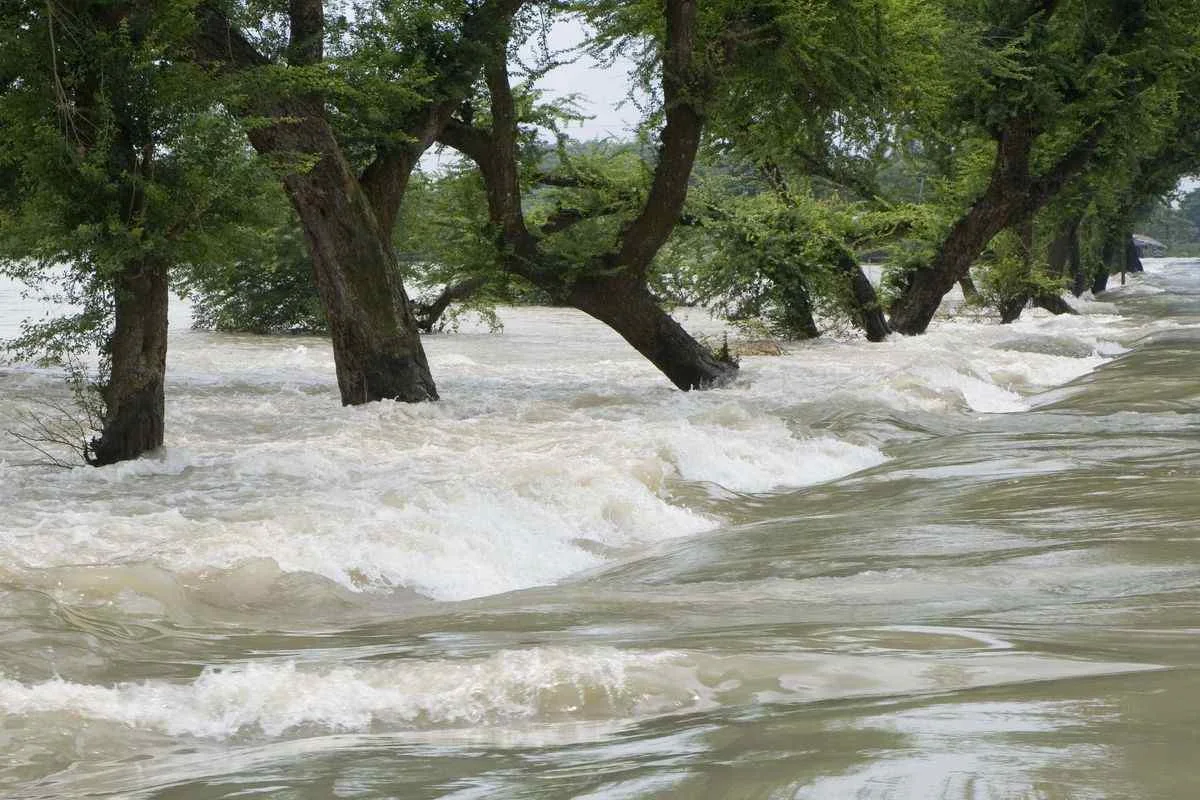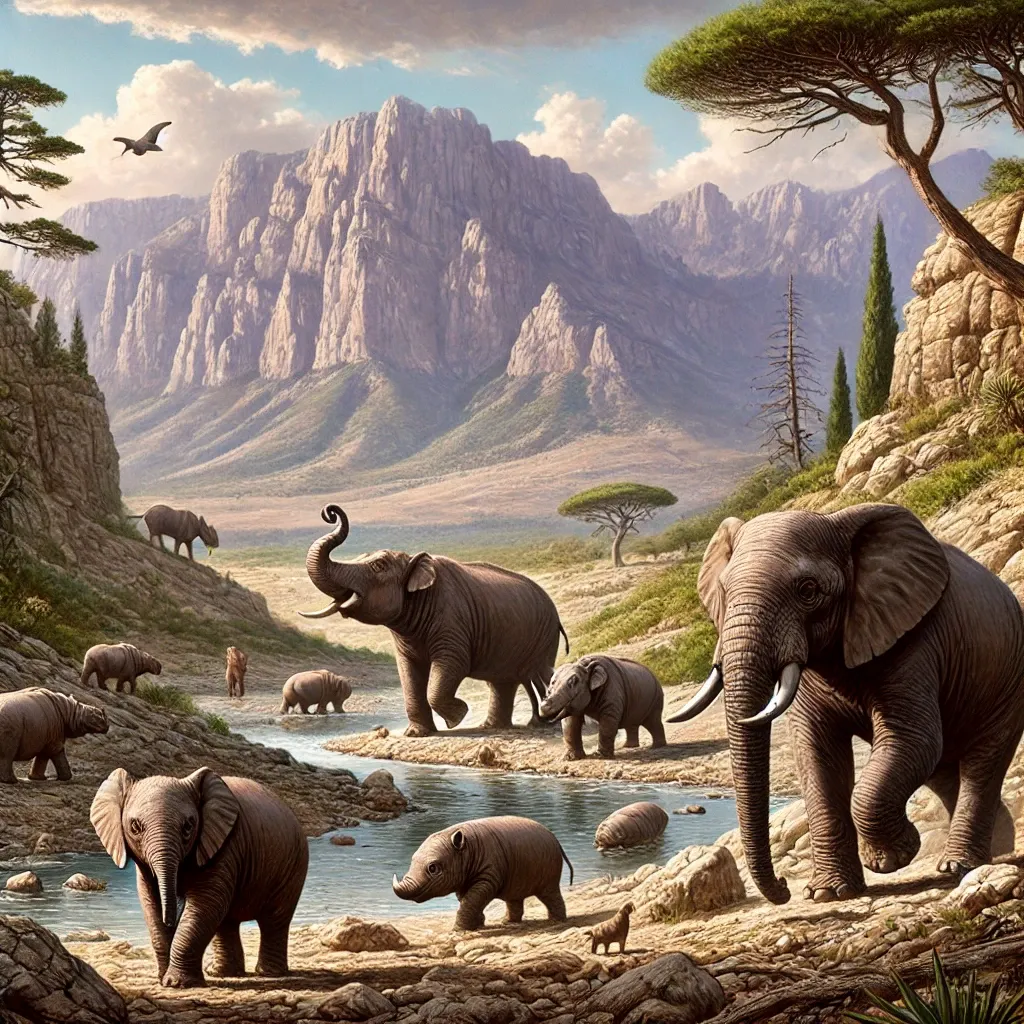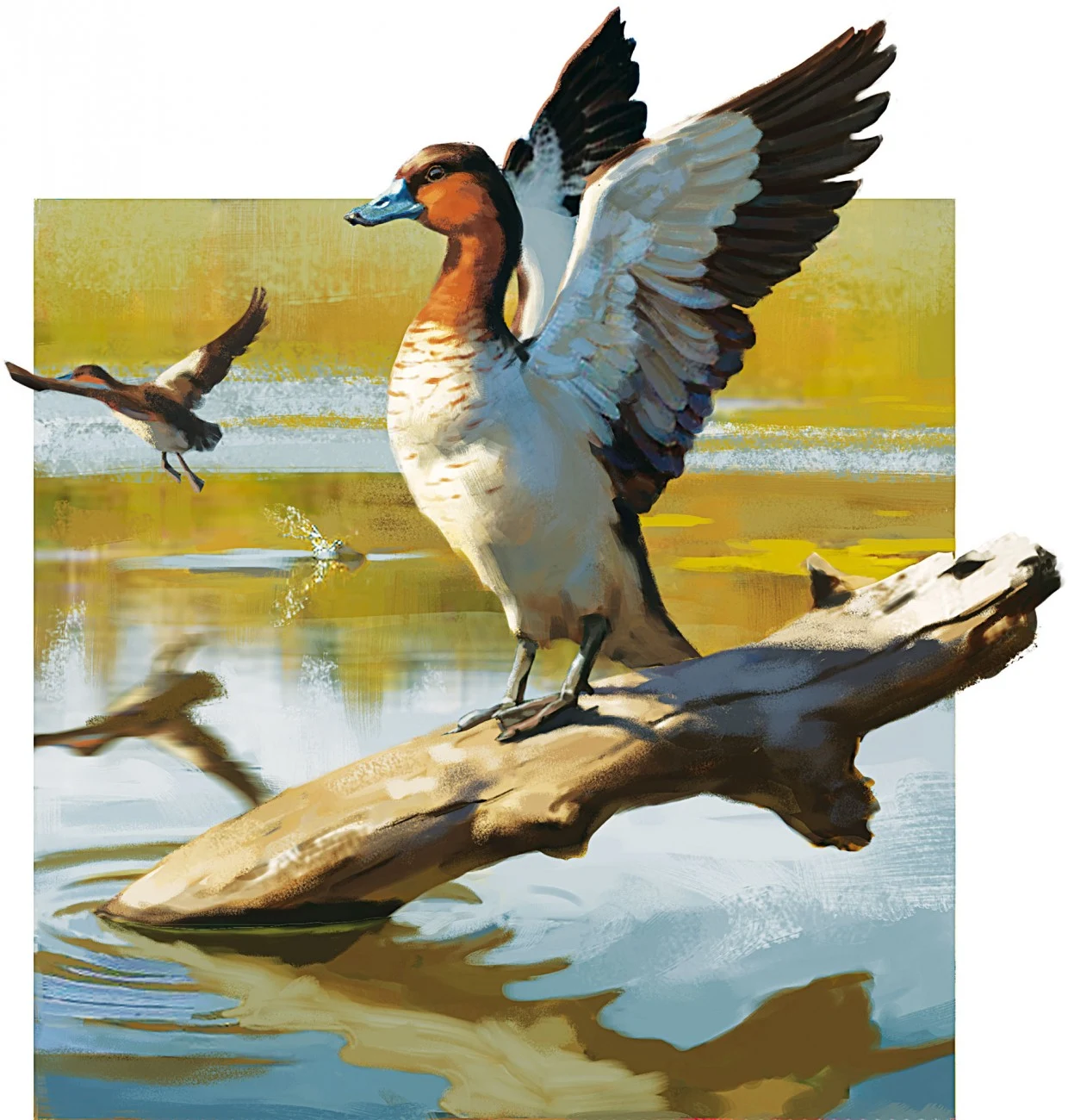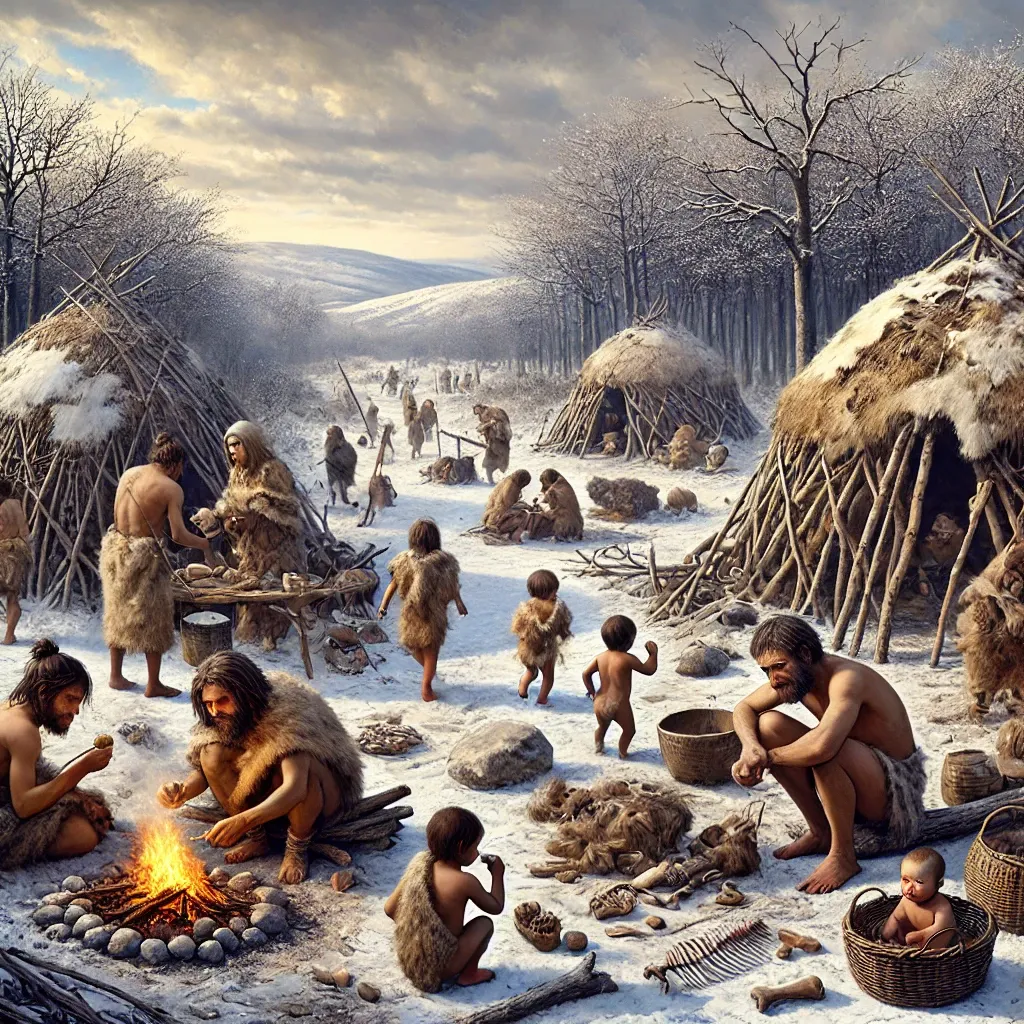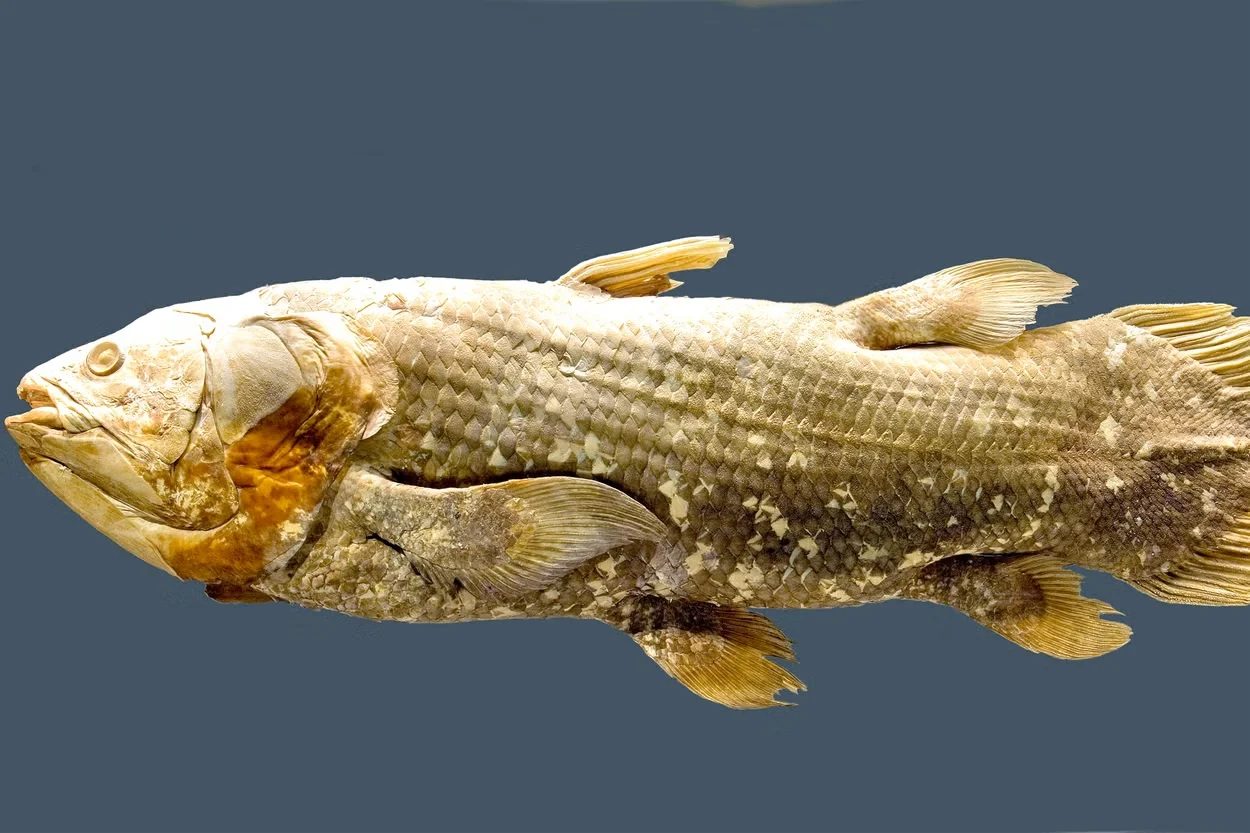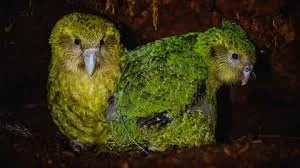Religion, Creationism, evolution, science and politics from a centre-left atheist humanist. The blog religious frauds tell lies about.
Thursday, 26 September 2024
Refuting Creationism - More Detail on The Evolution of the Mamalian Jaw and Middle Ear Bones - 17 Million Years before 'Creation Week'
September: Brazilian fossils | News and features | University of Bristol
As I confidently predicted in the conclusion to my last blog post, that might have been that day's casual refutation of creationism, but another would be along shortly.
Of course, I can't claim any credit for such an easy prediction because refutations of creationism are ten-a-penny in scientific literature, occurring often multiple times a day, simply by revealing facts that run counter to creationist claims.
This particular refutation deals with the discovery that the precursor to the mammalian jaw joint and middle ear bones occurred several times with this particular one appearing in the fossil record about 17 million years ago. The mammalian middle ear bones or ossicles are a modification of the reptilian jaw and the single reptilian middle ear bone.
Wednesday, 25 September 2024
Refuting Creationism - An Improved Method For Analysing Ancient Microfossils To Discover How Life Evolved
Research News - Unveiling Ancient Life: New Method Sheds Light on Early Cellular and Metabolic Evolution | Tohoku University Global Site
One of the clutch of science publications which casually and unintentionally refute creationism to be published today, comes in the form of a paper by a team from the University of Tokyo, Tohoku University and Kochi University, Japan, which describes a new method for analysing ancient microfossils, and so discovering more about how key processes evolved in early cellular life.
The purpose of this is to discover not whether (that is never in doubt) but the precise details of how and when these key processes evolved.
Refuting Creationism - Meteor Strikes Show Earth is NOT Perfectly Designed for (Human) Life!

It's a sign of their parochial ignorance that creationists believe their magic designer created Earth to be a perfect planet for them to live on. This notion fails to take into account the fact that, for many people, especially in the technologically under-developed parts of the world, life can be a struggle against disease, natural disasters, a lack of water and famine.
It also fails to take into account the record of natural disasters of a cosmological origin such as meteor strikes that have caused sudden mass extinctions in the vast length of time before creationists believe Earth was 'perfectly' created as a small flat planet with a dome over it in the Middle East.
Geologists from Virginia Commonwealth University (VCU), have identified the remnants of one such massive impact crater in the heart of Australia, measuring some 370 miles across. This impact is believed to have occurred toward the end of the Ediacaran period of Earth’s history, some 540 million years ago.
Tuesday, 24 September 2024
Malevolent Designer News - Why Cholera is So Good at Killing Us
News - Experts discover the deadly genetics of cholera, which could be key to its prevention - University of Nottingham
Although good hygiene and safe drinking water have most brought cholera under control in developed societies, it is still a major kill, especially of children, in poor and technologically under-developed countries.
It was a cholera outbreak of 1849 in Soho, London, the John Snow famously showed was statistically linked to drinking water from a well in Broad Steet, eventually persuading the authorities to remove the pump handle from the well, so ending the epidemic, that Snow conformed the Germ Theory of disease and founded modern epidemiology.
The cause was later shown to be a leaking septic tank which was contaminating the water in the well, and more remotely to a baby which caught cholera elsewhere whose nappy (diaper) was washed into the sewer, introducing the Vibrio cholerae into the septic tank.
I was born and brought up in North Oxfordshire in a rural community where, a generation earlier, cholera had been the single most common cause of death of children. A perusal of the parish burial registers shows regular patterns of epidemics causing a sudden increase in child deaths.
Even in technologically advanced countries, natural disasters such as earthquakes and floods, and man-made conflicts such as those currently in Gaza and Ukraine can destroy the infrastructure and quickly lead to conditions in which cholera can further devastate an already weakened population.
It would be an especially despicable malevolence that designed an organism to exploit people in those situation to ensure there was even more suffering, but those subscribing to the intelligent design hoax are unwittingly attributing exactly that to their putative designer god.
Monday, 23 September 2024
Refuting Creationism - Oldest Modern Human DNA Ever Recovered From South Africa - From About The Time Of 'Creation Week'!
Oldest DNA from South Africa decoded to date | Max-Planck-Gesellschaft
Just as creationism's legendary creator god was creating a small flat planet with a dome over it in the Middle East, there were modern humans living (or rather dying) in South Africa.
A team of scientists led by the Max Planck Institute for Evolutionary Anthropology and including palaeoanthropologists from University of Cape Town, Cape Town, South Africa, have now succeeded in reconstructing the genomes from the remains of 13 individuals who died between 1,300 and 10,000 years ago, including the oldest human genome from South Africa to date.
If the creation myth had any element of truth in it, humans would have radiated from the legendary founder couple to form a thriving community living in a rock shelter in South Africa's Cape Province. Moreover, the evidence now shows that these people were isolated from the rest of humanity for many thousands of years.
Sunday, 22 September 2024
Refuting Creationism - How Daisies Speciated On Isolated Islands
Bottom: Pulicaria canariensis
Bottom: Argyroxiphium sandwicense
Isolated daisies have the greatest diversity | Naturalis
Creationists try to get round the absurdity of the Bible myth which has two (or seven) of every species being packed into a wooden boat small enough to survive turbulent seas for a year, by introducing a new element to the myth that their god forgot to include - that there were just two (or seven) of each 'kind' and all of them underwent a period of warp-speed evolution (that non-one seemed to have noted) with several new species popping into existence each generation to give the many millions of known terrestrial species we have today.
Understandably, creationists are reticent to put any numbers on their claim. They won't say how many different 'kinds' there were on the boat, how many new species arose at each generation and for how long this period of fantastical speciation lasted. Nor will they define 'kind' in any meaningful way that matches any recognisable taxon. I have even been told it can mean 'animal kind' and 'plant kind'. It seems to vary according to the needs of the argument.
And they won't say why some 'kinds' have just one or two species while others have hundreds, or in the case of the Asteraceae family of plants, some 34,000 distinct species, so some must have been speciating much faster then other while some hardly bothered if at all.
In the later case, we now have a substantial database compiled by a team at the Naturalis Biodiversity Center, Leiden, The Netherlands which catalogues all 34,000 different species with their geographical distribution, showing how they radiated and diversified into new species, colonising isolated islands and, like Darwin's finches, radiating into different species on each island in an archipelago.
Saturday, 21 September 2024
Refuting Creationism - How, Properly Understood, A Biblical Myth Probably Refutes Creationism.
Breakthrough study from IU scientists predicts catastrophic river shifts that threaten millions worldwide: College of Arts + Sciences : Indiana University
According to researchers from Indiana University, Jackson School of Geosciences, University of Texas at Austin and the University of Minnesota, rivers can and do frequently change their course in an event known as an avulsion. The initial stage of this process is often a catastrophic flood costing thousands of lives and billions of dollars.
The authors speculate that these events could be the origin of numerous flood myths throughout history, especially the history of people living in flood plains of major river systems such as the Tigris and Euphrates on which the Epic of Gilgamesh was based.
The Epic of Gilgamesh, which even in its original form was never more than a story about a local flood, is believed to be the source of the Hebrew origin myth of Noah's Ark.
Ironically, these catastrophic avulsion events, of which the Noah's Ark myth is probably a result, are reminders of just how hostile this planet can suddenly become, giving the lie to parochial creationists assertions that Earth is perfectly designed for life (especially their life). Sudden major river avulsions impact dramatically on people living peacefully in river valleys where soil fertility and water can create the impression of a nicely ordered and well-designed place for life to exist.
Refuting Creationism - How New Genes Arise - No Magic Required
Researchers Publish Breakthrough Study on How New Genes Evolve | University of Arkansas
Four researchers working at the University of Arkansas have found a natural mechanism by which new genes can arise, which gives the lie to creationist claims that this is impossible.
Before moving on to the details of their discovery which has just been published, open access, in the Oxford University Press journal Molecular Biology And Evolution, I'll first discuss the current state of understanding of how new genetic information arises naturally, without the need for magic.
Refuting Creationism - Earth May Have had A Ring System 486 Million Years Before 'Creation Week'
Earth may have had a ring system 466 million years ago - Science
I know I'm always writing about things that happened before creationism's mythical 'Creation Week', but the problem is, almost everything that happened happened then. 99.9975% of Earth's history happened then, for example, and far more of the Universe's, since the Universe is some 3-4 times as old as Earth and an awful lot happened between the Big Bang and the formation of the sun and its planetary system.
And so, true to form, this is about the time 466 million years ago, when, according to the findings of three researchers from Monash University, Melbourne, Victoria, Australia, led by Professor Andrew G. Thomkins, Earth had a ring system, somewhat like those of Jupiter and Saturn. They believe the ring was composed of the debris of a large asteroid that passed close enough to Earth to be broken up by gravitational tidal forces.
The result was a sudden plunge into an ice age and a period of intense bombardment with meteorites lasting millions of years and producing an otherwise difficult to explain pattern of impact craters.
Friday, 20 September 2024
Refuting Creationism - Why Multicellular Life Evolved - Hundreds Of Millions Of Years Before 'Creation Week'
Explaining dramatic planetwide changes after world’s last ‘Snowball Earth’ event | UW News

A major theme of the creationist superstition is the childish notion that Earth was perfectly designed for life (and their life in particular because the designer created it all for them).
This of course, as with so much else in creationism, requires a genuine or contrived ignorance of the real world outside their small part of it, or they might notice that large parts of Earth are very hostile to most forms of life, especially multicellular life, and are inhabited, if at all, only by a few extremophile single-celled organisms such as bacteria, archaea and simple algae. Human life is impossible without special equipment at the poles, in deserts, at the top of higher mountains and in the oceans, for example. In fact, the proportion of Earth that is habitable by humans without clothing and shelter is very small indeed.
And there have been times in the past, in that long period of Earth's history that occurred before creationism's mythical 'Creation Week' in which a magic man made of nothing made everything else out of nothing, when Earth was uninhabitable by anything more complex than bacteria and archaea that could life in the depths of the oceans, because Earth was encased in a coating of ice up to 1 Km (0.6 miles) thick, in what is called 'snowball Earth' when the northern and southern icecaps extended until they met at the equator, making terrestrial life impossible.
Thursday, 19 September 2024
Malevolent Designer News - How A Parasitic Wasp Targets Adult Fruit Flies
New species of wasp ‘hidden in plain sight’ discovered by MSU researchers | Mississippi State University
The world of parasites is a world that creationists need to turn a blind eye to (and not one blinded by a parasitic worm) because it contains abundant examples of how an intelligence that designed parasites can only be regarded as some sort of malevolent sadist who designs ways to make living things suffer, often horribly and in especially ghoulish ways - the sort of ways that only a sick mind could dream up.
Creationist cult leaders are also probably reticent about discussing parasites, given their parasitic lifestyle, but that’s a different matter.
Within the world of parasites, there are fewer better examples of the casual cruelty that characterises it than those of the many parasitoid wasps that lay their eggs in the living bodies of their host species, where their larvae feed on the body of the host, often only killing it at the last moment and sometimes manipulating its victim or reanimating its dead body to protect the parasites within it.
Very many of these parasitoid wasps attack the larvae of other insects and gain the protection of the eventual cocoon their host makes before dying, so the wasp's reproductive cycle is linked to that of its host species.
Refuting Creationism - Humans Probably Exterminated The Pygmy Hippos and Elephants On Cyprus - 3-4,000 Years Before 'Creation Week'
Troodos Mountains in the background
Small populations of Stone Age people drove dwarf hippos and elephants to extinction on Cyprus
Today's routine refutation of creationism comes in the form of an article about the pygmy fauna on the Mediterranean island of Cyprus, that, along with similar pygmy fauna on other Mediterranean islands, was probably exterminated by early modern humans 3,000 - 4,000 years before the mythical 'Creation Week'.
The article is by Corey J. A. Bradshaw, Matthew Flinders Professor of Global Ecology and Node Leader in the ARC Centre of Excellence for Indigenous and Environmental Histories and Futures, Flinders University; Christian Reepmeyer, Deputy Director - Oceania, Deutsches Archäologisches Institut - German Archaeological Institute, and Theodora Moutsiou, Special Scientist, University of Cyprus, published in The Conversation. It is reprinted here under a Creative Commons licence, reformatted for stylistic consistency.
But first a little background to the Mediterranean island pygmy fauna:
Wednesday, 18 September 2024
Refuting Creationism - Aotearoa New Zealand's Rich Fauna - 20 Million Years Before 'Creation Week'
Kākāpō are the true ancient species of Aotearoa… | Canterbury Museum
The Bronze Age Middle Eastern Pastoralists who made up the Hebrew origin myths could have known nothing about a southern hemisphere, let alone archipelagoes like New Zealand (or to give the name that more accurately reflects its dual cultures, Māori and European, Aotearoa New Zealand) and they knew nothing of the rich history of Earth's wildlife, so they said not a word about it in their mythology.
So, we have the ludicrous situation where a sizable proportion of people - especially Americans - think nothing older than about 10,000 years and nothing that wasn't known to parochial Middle Eastern pastoralists, ever existed, despite the abundant evidence that it did and that it had ancestors very much older.
What information do you have on the St* Bathan's fauna found in the Bannockburn Formation on New Zealand's South Island? The St. Bathans Fauna is a remarkable fossil assemblage from the Early Miocene (around 19-16 million years ago) found in the Bannockburn Formation in New Zealand's South Island. Discovered near the small town of St. Bathans, this fossil site is part of the Manuherikia Group, which is known for providing a window into New Zealand's unique prehistoric ecosystem.For example, palaeontologists are discovering more fossils of the so-called St Bathan's fauna that charcterised Aotearoa New Zealand's South Island, most of which are of extinct species. These are being found in rocks known as the Bannockburn Formation that formed in an ancient lake by a team led by Associate Professor Trevor Worthy of Flinders University, Australia and including Dr Paul Scofield, senior curator of natural history, Canterbury Museum, Christchurch, Aotearoa New Zealand. They have recently published their findings, open access, in the journal Geobios:
Here’s a detailed overview of the St. Bathans fauna and its significance:
- Paleontological Importance
- The fossils represent a critical period when New Zealand was transitioning from being an isolated landmass with its own flora and fauna. This period is significant for the evolution of New Zealand's unique species after it split from Gondwana.
- The St. Bathans Fauna provides insights into how climate change affected New Zealand's environment and species during the Miocene epoch. At that time, the region was much warmer and covered with subtropical forests and wetlands, a stark contrast to the cooler, drier conditions that followed in the Pliocene and Pleistocene.
- Vertebrate Fossils
- Birds: The site is most famous for its extensive and diverse avian fossil record. Notable examples include:
- The giant flightless bird species similar to moa (though these are not the moa we are familiar with).
- Ancient species of waterfowl, shorebirds, and parrots, some of which are now extinct.
- Fossils of a possible heron species, various songbirds, and even a previously unknown eagle.
- Mammals: Mammal fossils in New Zealand are rare, but the St. Bathans site yielded intriguing examples of early mammals. These include:
- A small, shrew-like mammal (perhaps representing one of the only land mammals known in New Zealand before humans introduced others).
- Marsupial fossils that hint at a lineage distinct from modern marsupials in Australasia.
- Reptiles: Various lizard and possible gecko remains have been found, along with fossils that may represent tuatara ancestors.
- Fish: Several species of freshwater fish, especially primitive forms such as galaxiids, have been found, showing that New Zealand's fish diversity extended back tens of millions of years.
- Flora
- Plant fossils from the same region indicate that the Miocene landscape was densely vegetated with subtropical and temperate plants, including ferns, conifers, and flowering plants. The existence of forests and wetlands provided ideal habitats for the wide variety of animals found there.
- Significance for Climate and Ecological Studies
- The St. Bathans fauna gives researchers a clear picture of what New Zealand's environment was like during a warmer period of Earth's history, making it invaluable for studies on climate change and its impact on ecosystems over time.
- It shows a diversity of life forms that existed before the drastic cooling in the Pliocene, which led to the extinction of several species.
- Unique Species
- One of the notable discoveries includes a species dubbed the "St. Bathans mammal," which is a mysterious, small mammal species. New Zealand is generally known for its lack of native land mammals, but this discovery suggests that mammals may have once been present in ancient New Zealand, challenging previous assumptions.
- Bird species found in the Bannockburn Formation are also unique, some showing traits that link them to extinct lineages or suggest evolutionary connections with species outside New Zealand.
The St. Bathans fossil site continues to be a rich source of paleontological discovery, providing ongoing insights into the Miocene ecosystems of New Zealand and the biogeographical history of its fauna and flora.
Kākāpō are the true ancient species of Aotearoa New Zealand
Aotearoa New Zealand’s true ancient species are animals like Kākāpō, small wrens, bats and freshwater limpets, not recent Aussie immigrants like kiwi, moa and takahē.
This is the conclusion reached by an international team of palaeontologists after two decades of groundbreaking research at the St Bathans fossil site in Central Otago recently published in Geobios.
The team, including Canterbury Museum Senior Curator Natural History Dr Paul Scofield, have been excavating the large St Bathans site since 2001, uncovering thousands of fossil bones. The site, which was once at the bottom of a large prehistoric lake, offers the only significant insight into Aotearoa‘s non-marine wildlife from 20 million years ago.
The new research summarises the extraordinary creatures discovered in the more than 9,000 specimens collected across 23 years. Exotic creatures identified at the site include a giant parrot that the scientists nicknamed “Squawkzilla”, two mystery mammals, flamingos, a 3-metre crocodile, a giant horned turtle and a giant bat.
Paul Scofield, who has been involved in digs at St Bathans since 2002, said the research had prompted a rethink of our native fauna. Reconstruction of the 1m tall giant parrot Heracles inexpectatus, dwarfing a bevy of 8 cm high Kuiornis – small New Zealand wrens scuttling about on the forest floor.Illustration: Dr Brian Choo, Flinders University.
Reconstruction of the 1m tall giant parrot Heracles inexpectatus, dwarfing a bevy of 8 cm high Kuiornis – small New Zealand wrens scuttling about on the forest floor.Illustration: Dr Brian Choo, Flinders University.
Many of the species that we thought of as iconic New Zealand natives – a classic example would be the takahē – we now know are relatively recent blow-ins from Australia, arriving only a few million years ago. Twenty-three years of digging at St Bathans has changed our idea about the age of the New Zealand fauna and the importance of some animals over others. For example, until now we thought that birds like kiwi and moa were among the oldest representatives of New Zealand fauna. We are now realising that the Kākāpō, tiny New Zealand wrens and bats, and even a bizarre freshwater limpet, are the real ancient New Zealand natives.
Dr Paul Scofield, co-author
Canterbury Museum
Christchurch, New Zealand
The research concludes that this menagerie of exotic animals was wiped out by dramatic temperature drops over the last about 5 million years.
Lead author Flinders University Associate Professor Trevor Worthy said 23 years of research at St Bathans had transformed our understanding of how non-marine vertebrate life in New Zealand looked around 20 million years ago during the Early Miocene era.
It’s exciting to be involved in a project that continues to make absolutely fresh discoveries about what animals lived in New Zealand’s lakes and rivers, and the forests around them, during this critical period in history. Every year we find new specimens. Finds that reveal amazing new species that we couldn’t have imagined when we first started working there.
Associate Professor Trevor H. Worthy, lead author
College of Science and Engineering
Flinders University
Adelaide, South Australia, Australia
Study co-author Dr Vanesa De Pietri of the University of Canterbury said the animals that lived in New Zealand 20 million years ago were very different to what we have now.
For example, we had another giant eagle that was not related to Haast’s Eagle. We had a whole bunch of songbirds that were quite different, crocodiles and even potentially a small mammal that we’ve nicknamed the waddling mouse. We are still in the middle of our research into understanding exactly what that was.
Dr Vanesa L. De Pietri, co-author
School of Earth and Environment
University of Canterbury
Christchurch, New Zealand.
The latest research paper was a collaboration between Flinders University, Canterbury Museum, Te Whare Wānanga o Waitaha University of Canterbury, The University of Queensland, University of Copenhagen and University of New South Wales.

AbstractIf only the authors of Genesis had been a little better informed about the real world and its history, they could have come up with at least a half plausible creation myth by including some of the fauna from distant lands from millions of years ago, even if they felt they had to include magic to explain a world they thought ran on it.
The St Bathans Fauna, from sites near the village of St Bathans, Central Otago, South Island, is the first substantive pre-Quaternary terrestrial vertebrate fossil fauna discovered in New Zealand. This fauna derives from 33 sites or discrete sedimentary beds located in the lower 50 m of the lacustrine Bannockburn Formation, Manuherikia Group, and is generally accepted as local stage Altonian (19–15.9 Ma; Burdigalian, Early Miocene) in age. Investigations since 2001 have revealed an abundant and diverse fauna from over 9000 catalogued lots that is herein reviewed. Invertebrates notably include eight genera and species of terrestrial molluscs. Among vertebrates, freshwater fish remains dominate with 17 species evidenced by 16,500 analysed otoliths (genera Neochanna, Galaxias, Prototroctes, and Mataichthys) and many thousands of bones. Birds (minimally 45 species, several thousand bones) are the most common non-fish vertebrates, among which waterfowls dominate all assemblages (10 species). Co-occurring with these was a diverse herpetofauna, including undetermined crocodylians and a terrestrial turtle, both absent in Recent faunas. Significantly, the St Bathans Fauna evidences that Zealandia already had all of New Zealand’s ‘old’ endemic Recent taxa (sphenodontids, leiopelmatids, dinornithiforms, apterygids, aptornithids, strigopoid parrots, acanthisittids, and mystacinids) during the Early Miocene. Furthermore, it includes Australasia’s oldest ardeids, two flightless rallids, a novel higher landbird family, a greater diversity of bats, and terrestrial mammals. All sites reflect a single fauna, except that the ducks Manuherikia lacustrina (stratigraphically lower in section) and M. primadividua (higher) have a mutually exclusive distribution that is not yet correlated with any other biotic distribution differences.
1. Introduction New Zealand is a small emergent part of the India-sized continent of Zealandia that is largely submerged and from which New Caledonia, Lord Howe, Norfolk Island, the Chatham Islands, and the New Zealand subantarctic islands all project (Mortimer et al., 2017, Strogen et al., 2023). The New Zealand archipelago includes 800+ islands >1 ha, totalling 270,000 km2, of which North Island (114,740 km2) and South Island (151,120 km2) are the largest. Mainland New Zealand (North and South islands) averages ca. 2000 km from Australia. Seafloor-spreading that initiated 85–80 Ma in the south of the present Tasman Sea gradually rifted the new continent Zealandia from Eastern Gondwana, with rifting complete in the north by 60–55 Ma (Gaina et al., 1998, Schellart et al., 2006). The recent reconstructions by Strogen et al. (2023) developed these early models and in addition have a focus on land on Zealandia. They show Zealandia became fully separated from the Australian part of East Gondwana ca. 57 Ma although land connections had already been severed in the preceding few million years (Strogen et al., 2023). Thereafter, land area was progressively reduced, as the continent submerged, until the Late Oligocene marine highstand when ∼150,000 km2 remained (Strogen et al., 2023). Subsequently, land area increased, especially after the Australia–Pacific plate boundary migrated from its mid-Tasman Sea spreading centre to become propagated through New Zealand during the Early Miocene ∼18–16 Ma forming the Alpine Fault and resulting in regional uplift.
Worthy, Trevor H.; Paul Scofield, R.; De Pietri, Vanesa L.; Salisbury, Steven W.; Schwarzhans, Werner; Hand, Suzanne J.; Archer, Michael
A synopsis of the Early Miocene St Bathans Fauna of New Zealand
Geobios (2024), DOI: 10.1016/j.geobios.2024.03.002
Copyright: © 2024 The authors.
Published by Elsevier Ltd. Open access.
Reprinted under a Creative Commons Attribution 4.0 International license (CC BY 4.0)
As it was, their parochial ignorance was about the worst imaginable preparation for the task, hence the laughable result that could only be believed by someone at least as parochially ignorant as they were.
Tuesday, 17 September 2024
Refuting Creationism - Arctic Sled Dogs Had Already Diversified Into Two Types At Least 1,700 Years Before 'Creation Week'
Genomics reveals sled dogs’ Siberian lineage | Cornell Chronicle
The History of dogs and their co-evolution with humans as they diverged from their wolf ancestors is a fascinating and complex story, most of which, like 99.9975% of all of the history of life on Earth occurred before creationist's legendary 'Creation Week'.
'Creation Week' is when creationists believe a magic god made of nothing magicked a small universe consisting of a single flat planet with a dome over it, centred on the Middle East, all out of nothing, in just 6 days about 10,000 years ago, (although why an omnipotent god couldn't have done it all in an instant and needed 6 full days, with a day to recover from the effort, is never explained).
Monday, 16 September 2024
Refuting Creationism - Teenage Puberty, 15,000 Years Before 'Creation Week'

The thing about this study from a creationist perspective is its two-fold refutation of basic creationist dogma.
Firstly, it is not so much that teenagers in the last Ice Age went through puberty at pretty much the same age as modern teenagers, despite an assumed improvement in the diet of modern people compared to that of a Pleistocene hunter-gatherer, but that there were actually human teenagers 15,000 years before creationist dogma says that there was an Earth.
Secondly, there is the fact that the remains of these teenagers are available for analysis, when the mythical global genocidal flood, so beloved of creationists, should have swept it all away.
But counter-factual creationism is never perturbed by scientific evidence because, as all creationists know, scientific evidence is either lies made up by evil scientists, or just plain wrong as 'proven' by the fact that creationist cult leaders say so and it doesn't conform with what a bunch of scientifically-illiterate Bronze Age pastoralists who thought the universe consisted of a small flat planet with a dome over it, made up in their origin myths.
Refuting Creationism - Why 'Living Fossils' Aren't A Problem For Science
From coelacanths to crinoids: these 9 ‘living fossils’ haven’t changed in millions of years
While researching for my previous post, I came across this article in The Conversation which explains how and why some organisms appear to have remained unchanged for millions of years.
To creationist fools, inculcated to believe that the Theory of Evolution (TOE) says all organisms must change over time and is all about the fossil record, these apparent prolonged periods of morphological stability run counter to the TOE and so disprove it. To people so misled, these exceptions disprove the 'rule'.
But that is just what they are - exceptions - to the general tendency of organisms to respond to environmental changes by evolving to maintain their fitness to survive and reproduce in that environment. If their environment remains unchanged or fails to change in a way that is detrimental to their success, there is no pressure to change, especially morphologically. What we can't tell though is how much they change genetically, particularly in the non-coding areas of their DNA where changes are neutral.
Here then is a short list of 'living fossils' which, to those who understand the subject, are not a problem for evolutionary biology, though they are a problem for creationists who have to try to live with their favourite 'proof' that evolution is false involving organisms remaining unchanged for millions of years in a world which they believe is just a few thousand years old, and so shouldn't have fossils from millions of years ago.
The article is by Alice Clement, a Research Associate in the College of Science and Engineering, Flinders University. Her article is reprinted here under a Creative Commons license, reformatted for stylistic consistency:
Sunday, 15 September 2024
Refuting Creationism - How Creationists Lie To Us - The Coelacanths
Exceptional new fish fossil sparks rethink of how Earth’s geology drives evolution
In that strange logic that passes for rational thought in creationist circles, creationists will tell you that the 'fact' that coelacanths haven't changed for millions of years 'proves' the Theory of Evolution is false. Also, the 'fact' that scientists used to think coelacanths were extinct until one was caught, 'proves' science is all wrong, so Earth is only a few thousand years old [sic].
But of course, as with every other 'proof' of creationism, the 'facts' presented are in fact lies, intelligently designed by cult leaders to appeal to the child-like minds of creationists desperate for real-world evidence for their inherited superstition.
Firstly, coelacanths are not a species but a family consisting of several genera and they have changed over the millions of years between the most recent fossil and today and in its heyday, there were over 175 known species so far identified in the fossil record.
Secondly, the fact that scientists thought the entire family was extinct was simply based on the sudden disappearance of them in the fossil record and the fact that no living specimens had been seen - until one was caught. Scientists then changed their minds because the facts changed. The 'extinction' of the coelacanths was not a central part of the Theory of Evolution.
Friday, 13 September 2024
Refuting Creationism - How Earth Became 'Fine-Tuned' For Death And Extinction
Artist's impression of Earth during the Great Dying

Creationist claims that Earth was created perfectly designed for life (especially their life) are farcical and can only be believed by people carefully ignorant of the facts.
Of course, insisting that Earth is merely a few thousand years old, makes it easier to dismiss the 99.9975% of it that proves them wrong.
In my previous post I wrote about a newly-discovered trilobite with an additional pair of legs, and the reason we don't have them scuttling over marine sediment any more is because Earth turned against them when a climate catastrophe caused a marine catastrophe, depriving the oxygen-dependent organism's living in it of oxygen. This was one of the so-called Oceanic Deoxygenation Events.
That explains the mass extinction of marine life, but the question is, why did it also cause a terrestrial mass extinction of comparative severity?
Refuting Creationism - How Many Legs Had A Trilobite 250-300 Million Years Before 'Creation Week'?
New York State Fossils Reveal Extra Set of Trilobite Legs | AMNH
In that vast amount of time before creationism's god allegedly created a small flat planet with a dome over it, containing nothing and nowhere that wasn't known to the Bronze Age Canaanite pastoralists who first wrote about it, when 99.9975% of Earth’s history happened, there were swarms of trilobites living in the seas and regularly molting to leave hard body parts to fossilise in the marine sediment.
They did this so frequently that trilobites are now amongst the commonest of fossils, but nevertheless fossils preserving the soft body parts are rare, like the soft body parts of the rest of the Cambrian biota.
However, just such a fossil has turned up in upstate New York that shows something surprising - it has an additional pair of legs to the usual trilobite complement. This discovery is the subject of a paper in the journal Palaeontology (the journal of the Palaeontological Association) by Jin-Bo Hou from Nanjing University and Professor Melanie Hopkins, curator and chair of the American Museum of Natural History’s Division of Paleontology. The discovery is described in an American Natural History Museum news article:
Thursday, 12 September 2024
Unintelligent Design - Why A New Zealand Flighless Parrot Comes In Two Colour Forms
Flightless parrot in New Zealand developed different feather colors to evade predatory birds | ScienceDaily
The flightless kākāpō of New Zealand, a critically endangered member of the parrot family comes in two colour forms - olive and green - and neither seems to convey any obvious advantage over the other.
As an example of intelligent [sic] design, this would be an example of muddle and incompetence since, no matter how slight, one colour form would be better than the other so there would be no point in having two. It might be easier to manufacture one set of pigments for example, and having the ability to produce two different color forms with variants of the same genome when there is no advantage of one over the other is an unnecessary complexity of which any half-decent intelligent designer would be ashamed.
But as an example of what evolution by natural selection can produce, it makes perfect sense, especially when whatever environmental selectors produced the two colour forms might not now exist, so the cause might not now be obvious to a casual observer, unaware of the historical environment in which these traits evolved.
Wednesday, 11 September 2024
Malevolent Designer News - Creationism's Favourite Pestilential Malevolence Is Improving Its Delivery System
Study identifies areas of Europe at risk from dengue fever | UK Centre for Ecology & Hydrology
For devotees of creationism's putative intelligent [sic] designer, news that it is using a new, improved mosquito to deliver dengue fever to more people, including those in the densely populated continent of Europe, will be greeted with admiration for its creative genius.
Those with a more rational, adult understanding of the evidence will see this news as a natural consequence of environmental change and exactly the sort of thing evolution can produce, precisely as the Theory of Evolution predicts.
The news is that climate change has enabled the Asian tiger mosquito, Aedes albopictus, to extend its range into Europe and with it the virus that causes dengue fever or which the tiger mosquito is a vector.
Tuesday, 10 September 2024
Unintelligent Design - How Japanese Eels Are Designed To Escape From the Stomach Of Fish Designed To Eat Them
How Japanese eels escape from their predator's stomach | ScienceDaily
If creationism’s putative intelligent [sic] designer set out to show how stupid it can be, it would be hard pressed to come up with something as bizarre as designing a fish to eat eels, then designing eels to be able to escape from the stomach of the predators designed to eat them.
And yet creationists must believe that's exactly what their hyper-intelligent, omniscient god has done, according to the discovery of a team of researchers from the Graduate School of Fisheries and Environmental Sciences, Nagasaki University, Nagasaki, Japan.
According to their report in the Cell Press journal Current Biology, juvenile Japanese eels, Anguilla japonica, can escape from the stomach of the predatory fish Odontobutis obscura by travelling back up the fish's oesophagus and out through a gill slit.











